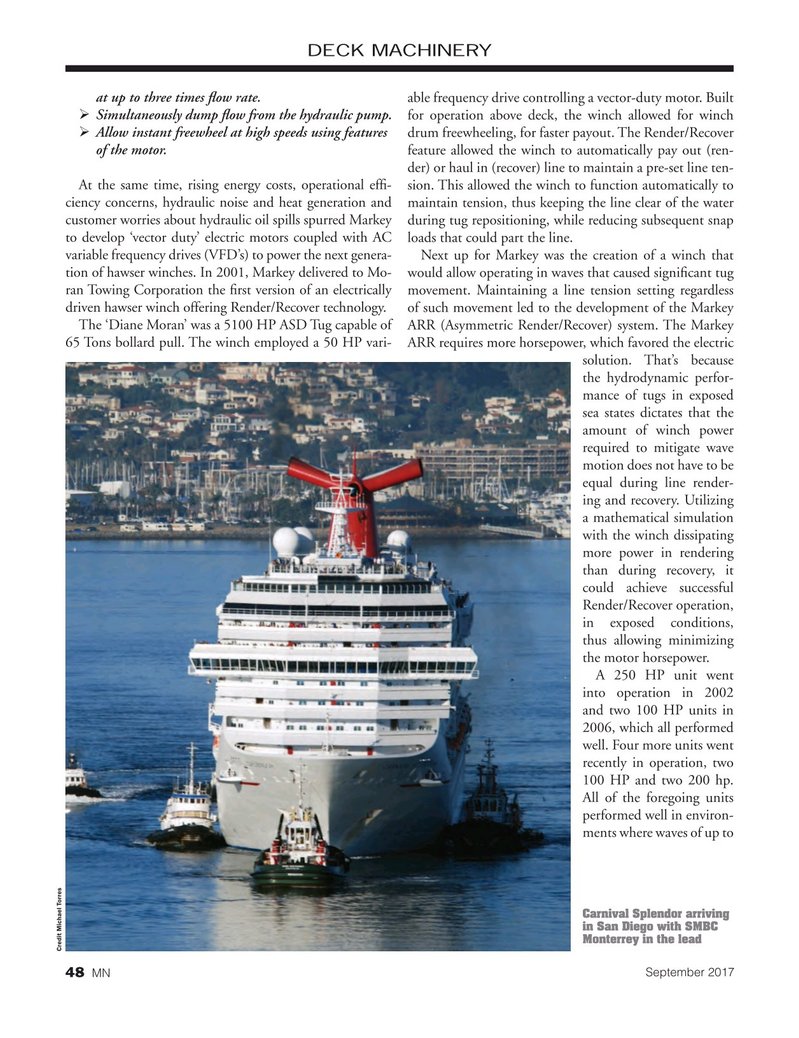
Page 48: of Marine News Magazine (September 2017)
Offshore Annual
Read this page in Pdf, Flash or Html5 edition of September 2017 Marine News Magazine
DECK MACHINERY at up to three times ? ow rate. able frequency drive controlling a vector-duty motor. Built ¾Simultaneously dump ? ow from the hydraulic pump. for operation above deck, the winch allowed for winch ¾Allow instant freewheel at high speeds using features drum freewheeling, for faster payout. The Render/Recover of the motor. feature allowed the winch to automatically pay out (ren- der) or haul in (recover) line to maintain a pre-set line ten-
At the same time, rising energy costs, operational ef? - sion. This allowed the winch to function automatically to ciency concerns, hydraulic noise and heat generation and maintain tension, thus keeping the line clear of the water customer worries about hydraulic oil spills spurred Markey during tug repositioning, while reducing subsequent snap to develop ‘vector duty’ electric motors coupled with AC loads that could part the line. variable frequency drives (VFD’s) to power the next genera- Next up for Markey was the creation of a winch that tion of hawser winches. In 2001, Markey delivered to Mo- would allow operating in waves that caused signi? cant tug ran Towing Corporation the ? rst version of an electrically movement. Maintaining a line tension setting regardless driven hawser winch offering Render/Recover technology. of such movement led to the development of the Markey
The ‘Diane Moran’ was a 5100 HP ASD Tug capable of ARR (Asymmetric Render/Recover) system. The Markey 65 Tons bollard pull. The winch employed a 50 HP vari- ARR requires more horsepower, which favored the electric solution. That’s because the hydrodynamic perfor- mance of tugs in exposed sea states dictates that the amount of winch power required to mitigate wave motion does not have to be equal during line render- ing and recovery. Utilizing a mathematical simulation with the winch dissipating more power in rendering than during recovery, it could achieve successful
Render/Recover operation, in exposed conditions, thus allowing minimizing the motor horsepower.
A 250 HP unit went into operation in 2002 and two 100 HP units in 2006, which all performed well. Four more units went recently in operation, two 100 HP and two 200 hp.
All of the foregoing units performed well in environ- ments where waves of up to
Carnival Splendor arriving in San Diego with SMBC
Monterrey in the lead
Credit Michael Torres 48 MN September 2017

 47
47

 49
49
